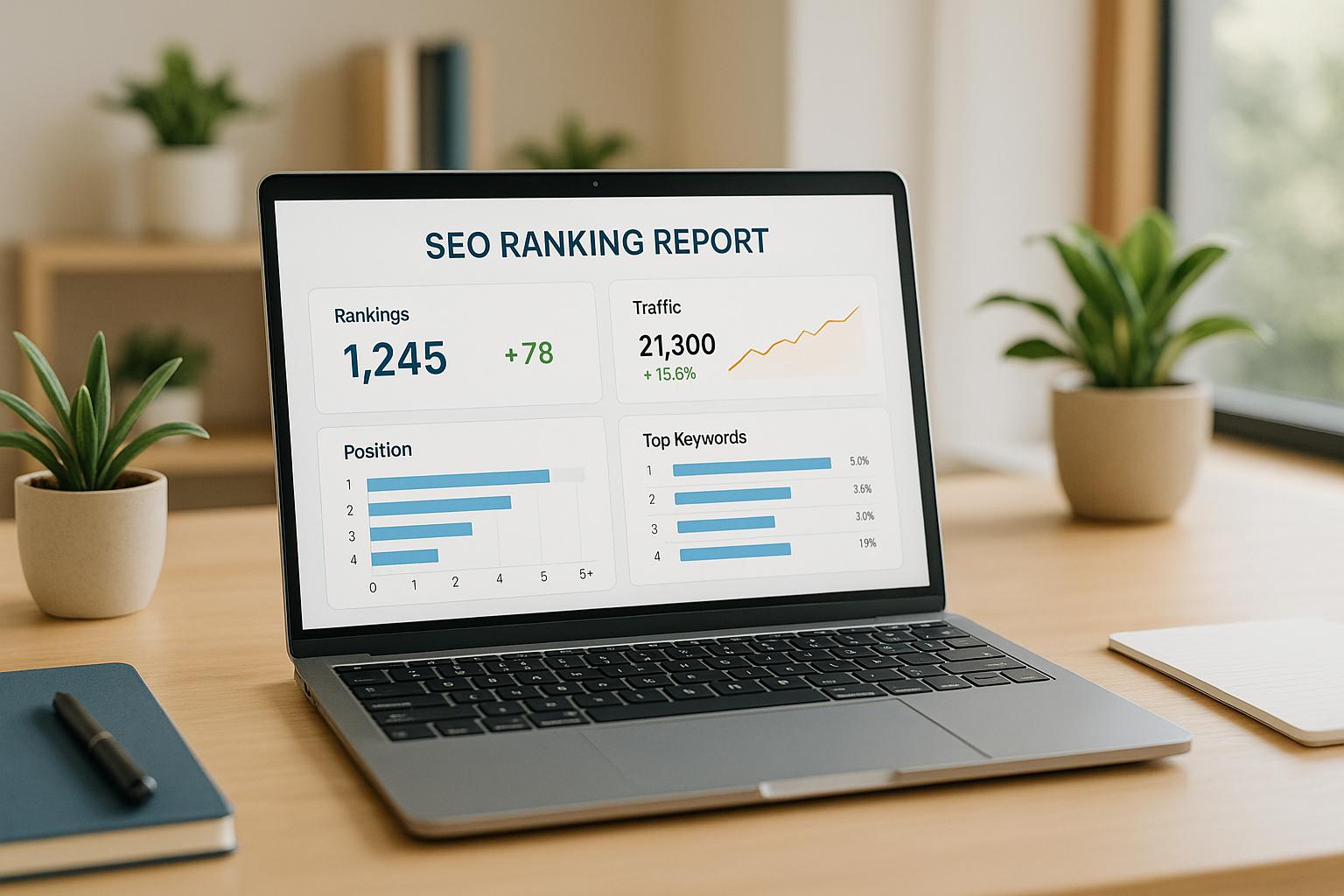Want to boost your website’s rankings with editorial links? Here’s how you can do it in 2024:
- Publish Original Research: Share unique data and insights that others will want to reference.
- Use PR Outreach: Build relationships with journalists and pitch newsworthy stories.
- Connect with Industry Experts: Collaborate with leaders in your field for mutual exposure.
- Write Guest Posts: Contribute valuable content to respected industry websites.
- Fix Broken Links: Replace outdated links on other sites with your updated content.
- Create Resource Pages: Develop tools, guides, or templates that others will link to.
- Engage in Industry Discussions: Participate in forums, social media, and events to establish authority.
- Capitalize on Trends: Act quickly on breaking news to create timely, link-worthy content.
These strategies help you earn high-quality backlinks naturally, increase your site’s authority, and improve search engine visibility. Start by picking methods that align with your skills and resources, and stay consistent for long-term results.
Link Building for Beginners: Complete Guide to Get Backlinks
1. Write Original Research and Data Reports
Publishing original research and data reports can help you earn editorial links naturally. When you share new insights, other websites are likely to reference your findings, which can lead to valuable backlinks.
Here’s how to create research that stands out:
- Pick a Research Topic: Look for a subject in your industry that doesn’t have enough data available. Focus on questions your audience is actively searching for.
-
Gather Data:
- Conduct industry surveys
- Analyze customer behavior
- Use market analysis tools
- Leverage internal reports
- Tap into public datasets
- Share Your Findings:
| Content Format | Purpose |
|---|---|
| Industry Reports | Provide detailed insights |
| Infographics | Highlight key statistics |
| Interactive Tools | Allow users to explore data |
| Case Studies | Offer specific, relatable examples |
Quick Tip: Make your data easy to reference by including standalone charts and embed codes.
Key things to include:
- Use statistically reliable sample sizes
- Clearly document your methodology and provide raw data access
- Present data visually with charts or graphs
- Update your research regularly (annually or quarterly)
- Offer downloadable resources for convenience
To boost sharing potential, focus on:
- Writing clear, attention-grabbing statistics
- Creating shareable snippets
- Reaching out to relevant journalists and experts
- Building strong connections within your industry
2. Use PR Outreach
PR outreach is a powerful way to secure editorial links. The key is crafting engaging stories and developing strong relationships with journalists.
Creating Newsworthy Pitches
To grab attention, focus on topics that matter. Here are some ideas:
- Breaking news in your industry
- Original research or data
- Expert opinions or commentary
- Solutions to industry challenges
- Major company announcements
Building Media Relationships
Good PR starts with meaningful connections. Here's how to strengthen your relationships with journalists:
- Do Your Homework: Research each journalist's area of expertise and recent work. This helps you tailor your outreach to their interests.
- Offer Value First: Be a helpful resource by sharing insights, offering expert quotes, connecting them with industry leaders, or providing exclusive data.
- Nail Your Pitch: A well-crafted pitch can make or break your outreach.
Key elements of a strong pitch include:
| Element | What to Do |
|---|---|
| Subject Line | Keep it under 60 characters and highlight the news angle. |
| Opening | Mention their recent work to show you've done your research. |
| Story Hook | Lead with compelling data or a fresh perspective. |
| Supporting Info | Back up your pitch with quotes, stats, or other relevant details. |
| Call to Action | Offer interviews, additional resources, or exclusive access. |
Once you've built trust, you can use PR tools to amplify your outreach.
Using PR Tools Effectively
Certain tools can streamline and enhance your PR efforts:
- HARO (Help A Reporter Out): Respond quickly to journalist queries to increase your chances of being featured.
- Muck Rack: Research journalists' interests and track where your brand is mentioned.
- Cision: Access a wide range of media contacts and measure your PR success.
- Respona: Personalize outreach at scale while maintaining a human touch.
Keep a record of every interaction - note preferred contact methods and typical response times. This information will help you fine-tune your future outreach efforts.
3. Connect with Industry Experts
Building relationships with industry experts can help you gain editorial links while boosting your site's credibility. Just like original research or solid PR outreach, connecting with the right experts strengthens your authority.
Finding the Right Experts
To make the most impact, focus on key figures in your industry who are active and respected. Look for individuals who:
- Publish regularly on top industry websites
- Run blogs with a strong, engaged audience
- Speak at major conferences or events
- Have a notable presence on social media
- Contribute to respected publications
Engagement Platforms
Different platforms can help you connect with experts in unique ways. Here's a quick breakdown:
| Platform | Best For | Engagement Strategy |
|---|---|---|
| Professional networking | Comment on posts, share their content, and join relevant industry groups | |
| Real-time discussions | Participate in Twitter Spaces, use industry hashtags, and engage in ongoing threads | |
| Industry Forums | In-depth conversations | Answer questions, share your expertise, and start meaningful discussions |
| Conference Events | Face-to-face networking | Attend workshops, join panels, and schedule one-on-one meetings |
These platforms allow for more personal and direct connections, complementing your PR efforts.
Building Genuine Relationships
-
Start Small
Begin by following experts and engaging with their content - comment thoughtfully and share their work. -
Provide Real Value
Offer something meaningful in return, like:- Sharing relevant studies or research
- Connecting them with other professionals
- Offering unique insights or feedback
- Writing testimonials or endorsements
-
Collaborate on Content
Suggest working together on projects like co-authored articles, joint research, podcast episodes, or webinars.
Consistent interaction can turn these small steps into long-term partnerships.
Staying Connected
Keep relationships strong by checking in regularly, sharing updates, and supporting their work. Over time, this trust can lead to collaborations and mentions that naturally result in editorial links.
When you're seen as a valuable part of their network, opportunities for links and partnerships will come naturally.
4. Write Expert Guest Posts
Guest posting is a smart way to earn high-quality editorial links, especially when you focus on respected industry websites and prioritize well-written, relevant content.
Finding the Right Guest Post Opportunities
Look for websites that:
- Attract an engaged audience with active comments and social shares.
- Publish detailed, research-based articles.
- Follow strict editorial guidelines.
- Feature work from established industry professionals.
- Have strong organic search rankings.
How to Pitch Effectively
Editors get tons of submissions, so your pitch needs to grab their attention. Here’s what you should include:
| Element | Description | Example |
|---|---|---|
| Relevance | Aligns with the site’s focus | SEO strategies for e-commerce |
| Originality | Offers a new or unique perspective | Sharing new research findings |
| Expertise | Shows your knowledge and experience | Case studies or industry insights |
| Value Add | Benefits the site’s audience | Actionable templates or frameworks |
Writing Content That Attracts Links
To make your guest posts stand out, focus on content that’s naturally link-worthy:
- Original Research: Share unique data or case studies that readers can’t find elsewhere.
- Expert Insights: Use your experience to offer fresh perspectives, detailed examples, and step-by-step processes.
- Actionable Solutions: Break down complex topics into easy-to-follow steps that readers can use right away.
Tips for Including Links
When adding links to your guest posts, keep them relevant and valuable:
- Link naturally within the content - avoid forcing it.
- Direct readers to specific, in-depth pages instead of just your homepage.
- Use data or research to support the linked content.
- Ensure the linked page offers additional value to the audience.
Build Long-Term Relationships
Don’t stop at a single guest post. Becoming a regular contributor has its perks:
- More creative freedom in your writing.
- Faster approvals for your posts.
- Better opportunities for link placements.
- Potential collaborations with the site’s team.
- Access to exclusive publishing opportunities.
Regular contributions not only strengthen your authority but also improve your chances of securing valuable links over time.
sbb-itb-5be333f
5. Find and Fix Broken Links
Addressing broken links can help you recover lost value and improve your site's link profile. Plus, it enhances user experience by replacing outdated links with relevant, updated content.
Identifying Broken Links
You can use various tools to uncover broken link opportunities across your website or competitors' sites:
| Tool Type | Primary Function | Best Use Case |
|---|---|---|
| Link Checkers | Find 404 errors | Large-scale link audits |
| Browser Extensions | Check individual pages | Manual content research |
| SEO Software | Analyze backlinks deeply | Competitor link profiling |
For a curated list of SEO tools to assist in your broken link audits, check out the Top SEO Marketing Directory.
Prioritizing Link Opportunities
When deciding which broken links to address, focus on:
- Sites with strong domain authority and editorial standards.
- Pages relevant to your niche or expertise.
- Links that broke within the last 6–12 months.
- Pages with multiple referring domains and steady traffic.
Creating Replacement Content
To replace broken links effectively:
- Replicate the intent of the original content and add value with updated data, expert opinions, or visuals.
- Ensure high quality by fact-checking, editing professionally, citing sources, and covering the topic thoroughly.
Once your replacement content is ready, move quickly to pitch it to webmasters.
Outreach Best Practices
When contacting site owners about a broken link:
- Be concise: Mention the specific broken link and where it’s located.
- Offer value: Show how your content serves as a great replacement.
- Stay professional: Use a polite, businesslike tone.
- Be clear: Include your replacement URL in the initial email.
Tracking and Follow-Up
Keep an eye on these metrics to measure your outreach success:
| Metric | What to Track | Why It Matters |
|---|---|---|
| Response Rate | Number of replies received | Gauges how effective your outreach is. |
| Success Rate | Links gained vs. attempts | Helps evaluate ROI. |
| Time to Replace | Days from pitch to placement | Optimizes resource planning. |
| Link Quality | Domain authority and relevance | Shows the value of the links you’ve earned. |
6. Make Link-Worthy Resources
Building resources that stand the test of time is a solid way to earn editorial links. Create assets that address specific challenges or fill knowledge gaps in your field.
Types of Resources That Attract Links
| Resource Type | Link Potential | Effort | Ideal Audience |
|---|---|---|---|
| Interactive Tools | Very High | High | Technical audiences |
| Original Research | High | Medium | Industry analysts |
| Templates | Medium | Low | Practitioners |
| Comprehensive Guides | High | Medium | Decision makers |
How to Build Evergreen Resources
Focus on creating:
- Industry standards that become go-to references.
- Tools like calculators or assessment frameworks that solve specific problems.
- Data visualizations to make complex information easier to understand.
Getting Your Resources Noticed
- Initial Launch: Share with key influencers and industry-specific publications.
- Ongoing Promotion: Keep the resource updated and share it periodically.
- Improvements: Use feedback to add fresh data or features.
Tracking Performance
Monitor these metrics to evaluate the success of your resources:
- Citation Rate: How frequently others reference your content.
- Time on Page: The average time users spend engaging with the resource.
- Social Shares: How often it’s shared on platforms like LinkedIn or Twitter.
- Backlink Quality: The authority of the websites linking to your resource.
Technical Must-Haves
Ensure your resources are mobile-friendly, quick to load, easy to navigate, and properly indexed for search engines.
For tools to streamline the creation and optimization process, check out the Top SEO Marketing Directory.
Keeping Resources Up-to-Date
Regular updates are crucial for staying relevant. Schedule reviews to:
- Refresh statistics and data.
- Check and update external links.
- Incorporate new industry trends.
- Remove outdated content.
- Add fresh examples or case studies.
Consistent updates will keep your resources valuable and help secure ongoing editorial links.
7. Join Industry Discussions
Taking part in industry conversations is a great way to establish your authority and attract editorial links. These efforts can work hand-in-hand with your content strategies to boost your online presence.
Here are some practical ways to get involved:
- Engage on LinkedIn and niche forums: Share your knowledge and interact with peers.
- Join trending discussions on social media: Contribute your perspective to relevant topics.
- Attend industry events: Whether virtual or in-person, events offer excellent networking opportunities.
Focus on providing helpful insights and thoughtful answers rather than directly asking for links. When you showcase your expertise, the recognition - and links - will follow naturally.
8. Monitor and Act on News Trends
Keep an eye on trends to create timely content that attracts links and attention.
Set Up News Monitoring Systems
Use tools to stay updated on industry trends:
- Google Alerts: Track specific keywords related to your industry.
- Feedly: Follow RSS feeds from top industry publications.
- Twitter Lists: Organize influential journalists and industry leaders.
- Newsletters and Forums: Subscribe to industry-specific updates.
These tools will help you spot trends quickly so you can act without delay.
Act Fast on Breaking News
When a trend or breaking news emerges, respond quickly by:
- Analyzing the news from your industry’s perspective.
- Adding expert commentary or insights.
- Including relevant data to back up your points.
- Creating detailed resources that journalists can link to.
Here’s a quick guide to content types and their potential:
| Content Type | Time Sensitivity | Link Potential |
|---|---|---|
| Breaking News Analysis | Within 24 hours | High |
| Expert Commentary | 1-3 days | Medium-High |
| Comprehensive Guides | 1-2 weeks | Medium |
| Industry Impact Reports | 2-4 weeks | High |
Focus your content on questions like:
- What does this mean for the industry?
- How will this affect businesses?
- What steps should companies take to prepare?
Conclusion
Building editorial links in 2024 calls for a well-thought-out approach. The eight methods we've covered offer a clear path forward, adaptable to your resources and skill set.
Here's a framework to guide your link-building efforts:
| Strategy Level | Ideal For | Time Investment | Resource Needs |
|---|---|---|---|
| Beginner | Broken Link Building, Discussions | 5–10 hours/week | Low – basic content tools |
| Intermediate | Guest Posting, News Monitoring | 10–20 hours/week | Medium – content team, tools |
| Advanced | Original Research, PR Outreach | 20+ hours/week | High – research, PR expertise |
Use this table to match your strategies with your current capabilities. For example, if you excel at writing but have limited resources, focus on guest posting and participating in industry discussions. Once you're ready, transition to more demanding strategies like conducting original research.
Keep an eye on your progress, tweak your methods based on link quality and results, and build strong connections with industry professionals and journalists. Consistency is key - avoid short-term bursts and aim for steady, long-term efforts.
Take action today:
- Assess your resources and pick your main and backup strategies
- Draft a 90-day plan with clear goals
- Start connecting with key players in your industry
Editorial link building takes time and persistence. By focusing on value and genuine relationships, you'll create a lasting strategy that pays off well into 2024 and beyond.
For more tools and expert insights, check out the Top SEO Marketing Directory.


